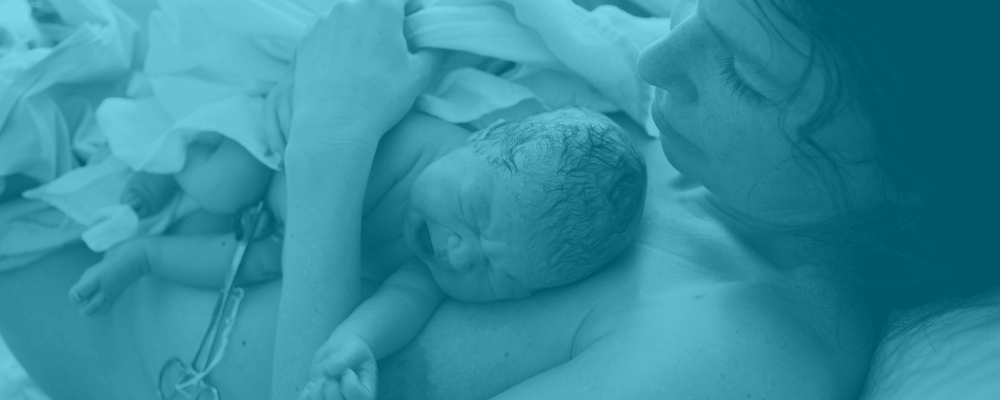A recent publication1 from Clinicians at the University of Nottingham has highlighted the critical role of technology in neonatal care. Whilst neonatal outcomes have improved significantly over recent decades through the use of new technologies, much of this technology has not been studied in neonates2. The review paper highlighted that of 24 medical devices receiving pre-market regulatory approvals for use in children, 21 had never been studied in children2. The publication investigates some of the key medical technologies used in neonatal care and the evidence to support their adoption to improve outcomes, and highlights the need for more investment and research.
Vital Signs Monitoring and Medical Technology advances in care of the newborn baby
Heart rate
ECG has been recommended by the International Liaison Committee on Resuscitation (ILCOR) since 2015 for rapid and accurate heart rate during stabilisation post birth. Whilst pulse oximetry (PO) is also commonly used to measure heart rate, it has been found to take longer to attach, provide a less reliable signal and underestimates heart rate in the first minutes of life, compared with ECG. Reflectance photoplethysmography (rPPG) is an optical heart rate measurement technique that measures variations in blood circulation using a light source and photodetector at the skin surface. It is reported to correlate closely with ECG3. Doppler ultrasound for heart rate assessment is also used in several countries.
Oxygen saturation
Transmission mode pulse oximetry (PO) devices, employed since the 1980s, indirectly monitor peripheral blood oxygen saturation (SpO2) using light transmission across thin body parts (eg wrist or ankle). Initially recommended by ILCOR for newborn resuscitation in 2010, they are also used for screening congenital heart defects in asymptomatic newborns, displaying high specificity and moderate sensitivity. In randomized clinical trials for preterm infants, higher target oxygen saturation (vs lower), measured with transmission mode PO devices, demonstrated mortality and morbidity reductions.
Temperature
Monitoring temperature is a crucial aspect of neonatal care, particularly for preterm infants both during their first hour of life and throughout their stay in the Neonatal Intensive Care Unit (NICU). The publication summarizes that digital thermometers placed in the axillary position correlate well with traditional mercury-in-glass thermometers. In intensive care settings, electronic skin surface temperature probes are frequently utilized to continuously monitor both central and peripheral temperatures. Although there is some supporting evidence for their alignment with axillary and rectal temperatures, the accuracy of these probes may be questionable due to factors such as ambient temperature, contact adequacy, and peripheral perfusion status.
Human factors
Human factors/ergonomics (HFE) is the application of psychological and physiological principles to product engineering and design, often overlooked in device development. The publication highlights cognitive ergonomics, which is particularly relevant to medical professionals in product design, encompassing mental workload, decision-making, and skilled performance in human-computer interactions. Applying HFE to medical product development uncovers hidden user requirements, as demonstrated in a recent study aiding the development of the SurePulse VS product4.
SurePulse Medical Ltd continues to develop new technologies to improve outcomes of newborn babies
SurePulse is a spin-out of the University of Nottingham and is one of several companies investing in this high-profile clinical area. The technologies that SurePulse have developed (and are in the process of developing) are baby-centric in design and have the potential to transform babies’ lives across the world. Their first product is the SurePulse VS, a wireless heart rate monitor specifically designed around the needs of the newborn baby. Click here for more information on SurePulse technologies and here for recent data presented at the jENS neonatal conference in Rome in September 2023.
Conclusions
Improvements in neonatal medicine rely extensively on progress in medical technology. Regrettably, medical devices tailored to the needs of this distinctive and vulnerable population are lacking, with reliance on devices designed for adults and older children. There is an imperative need for increased investment in resources and expertise dedicated to crafting devices specifically suited to the unique environments of delivery rooms and neonatal intensive care units (NICUs).
References
- Syed Taha, Rosalind B. Simpson, Don Sharkey, The critical role of technologies in neonatal care, Early Human Development, 187 (2023) 105898, ISSN 0378-3782 https://doi.org/10.1016/j.earlhumdev.2023.105898.
- J. Hwang, A.S. Kesselheim, F.T. Bourgeois, Postmarketing trials and pediatric device approvals, Pediatrics 133 (5) (2014) e1197–e1202.
- Anton, R. Fernandez, E. Rendon-Morales, R. Aviles-Espinosa, H. Jordan, H. Rabe, Heart rate monitoring in newborn babies: a systematic review, Neonatology 116 (3) (2019) 199–210.
- Pickup, A. Lang, L. Shipley, C. Henry, J. Carpenter, D. McCartney, et al., Development of a clinical Interface for a novel newborn resuscitation device: human factors approach to understanding cognitive user requirements, JMIR Hum. Factors 6 (2) (2019), e12055.
